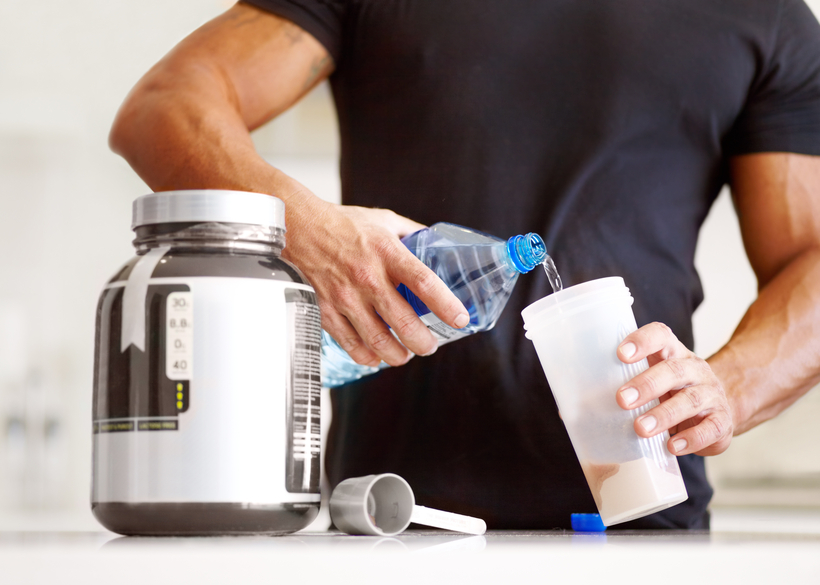Myth #1: For maximum health, obtain 30 to 40 g of fiber daily from fresh fruits and vegetables.
Reality: Here is how many fresh fruits you’ll need to eat throughout the day in order to obtain those 30 to 40 grams (1-1.4 oz) of daily fiber:
That comes to five apples, three pears, and two oranges. A small apple contains 3.6 g of fiber and 15.5 g of sugars. A small pear—4.6 g and 14.5 g; and a small orange—2.3 g and 11.3 g respectively (USDA National Nutrient Database; NDB #s: 09003; 09200; 09252).
These ten small (not medium or large) fruits will provide you with 36.4 g of indigestible fiber and a whopping 143.6 g of digestible sugars, or an equivalent of that many (ten) tablespoons of plain table sugar!
And that‘s before accounting for all the other carbs consumed throughout the day for breakfast, lunch, dinner, and from snacks and beverages.
So ask yourself this question: even if you are a 100% healthy 25-year-old muscle-bound athlete, would you ever ingest that much sugar willingly? The answer is obvious—no way!
But that’s exactly what’s being recommended for “health purposes” to American children and adults. It‘s not surprising that so many are suffering from the ravages of diabetes and obesity—the total daily carbohydrate requirement for an average adult is under 200 grams, even less for children.
The ratio of digestible carbohydrates (sugars) to fiber in vegetables, cereals, breads, beans, and legumes is, on average, similar to fruits. Thus, no matter how hard you try to mix’n’match, you’ll be getting screwed all the same. Incidentally, that’s the meaning of those brass screws in the cereal bowl on the front cover of Fiber Menace.
This myth—that fruits and vegetables are the best source of fiber—is probably the most pervasive and damaging of all. If fiber is what you‘re really after, you‘re better off getting it from fiber supplements. These, after all, have almost no digestible carbs. But, then, of course, you run into those other persistent falsehoods…
Myth #2: Fiber reduces blood sugar levels and prevents diabetes, metabolic disorders, and weight gain.
Reality: That’s a blatant deception. If you consume 100 g of plain table sugar at once, the blood absorbs all 100 g of sugar almost as soon as it reaches the small intestine, where the assimilation takes place. If you add 30 g of fiber into the mix, the fiber will first clog the stomach for a while. Second, it will partially block intestinal absorption, which, in turn, will extend the rate of sugar assimilation into the blood, from, let‘s say, one hour to three.
But at the end of those extra three hours the blood will still absorb exactly the same 100 g of sugar—not an iota more, not an iota less. If you are a diabetic, the only difference will be that you‘ll require more extended (long-acting) insulin (for type 1 diabetes) or larger doses of medicine (for type 2 diabetes) to deal with slow-digesting sugars, and your blood glucose test will not spike as high after the meal.
But you‘re fooling no one but a glucose meter. In all other respects, the damage will be all the same, or even worse. That’s because the carbohydrate load on the cells, liver, pancreas, and kidneys from extended sugar digestion, elevated insulin, and high triglycerides (assimilated fatty acids) is much higher. And that‘s even before taking into account the negative impact of fiber on the digestive organs, or hyperinsulinemia and triglycerides on the heart, blood vessels, and blood pressure.
Once inside the large intestine, most of that fiber will get fermented into volatile gases (cause bloating, cramping, and flatulence); short-chain fatty acids (at 2.5 to 4 calories per g, in excess cause anal itching, diarrhea, and hemorrhoidal inflammation); and alcohols (at 7 calories per g). Most of those substances get assimilated into your blood as fast as bacteria can make it happen.
Now, on top of nauseating gases and extra calories from fatty acids, you are also getting hit with alcohols, including methanol, which is quite toxic even in trace amounts. So if you still can’t pin down the causes of that nagging migraine, or lousy sleep pattern, or anxiety, or depression, or fatigue, then just shut down that little distillery inside your gut. ‘Sober up,’ and enjoy some peace and quiet.
Myth #3: Fiber-rich foods improve digestion by slowing down the digestive process.
Reality: Fiber indeed slows down the “digestive process,” because it interferes with digestion in the stomach and, later, clogs the intestines the “whole nine yards.” The myth is that it can be good for health and the digestive process.
Here is what you get from delayed digestion: indigestion (dyspepsia), heartburn (GERD), gastritis (the inflammation of the stomach‘s mucosal membrane), peptic ulcers, enteritis (the inflammation of the intestinal mucosal membrane), and further down the chain, constipation, irritable bowel syndrome, ulcerative colitis, and Crohn‘s disease.
All this, in fact, is the core message of Fiber Menace: fiber slows down the digestive process! And slow digestion is ruinous for your health. Don‘t mess with fiber unless your gut is made of steel!


